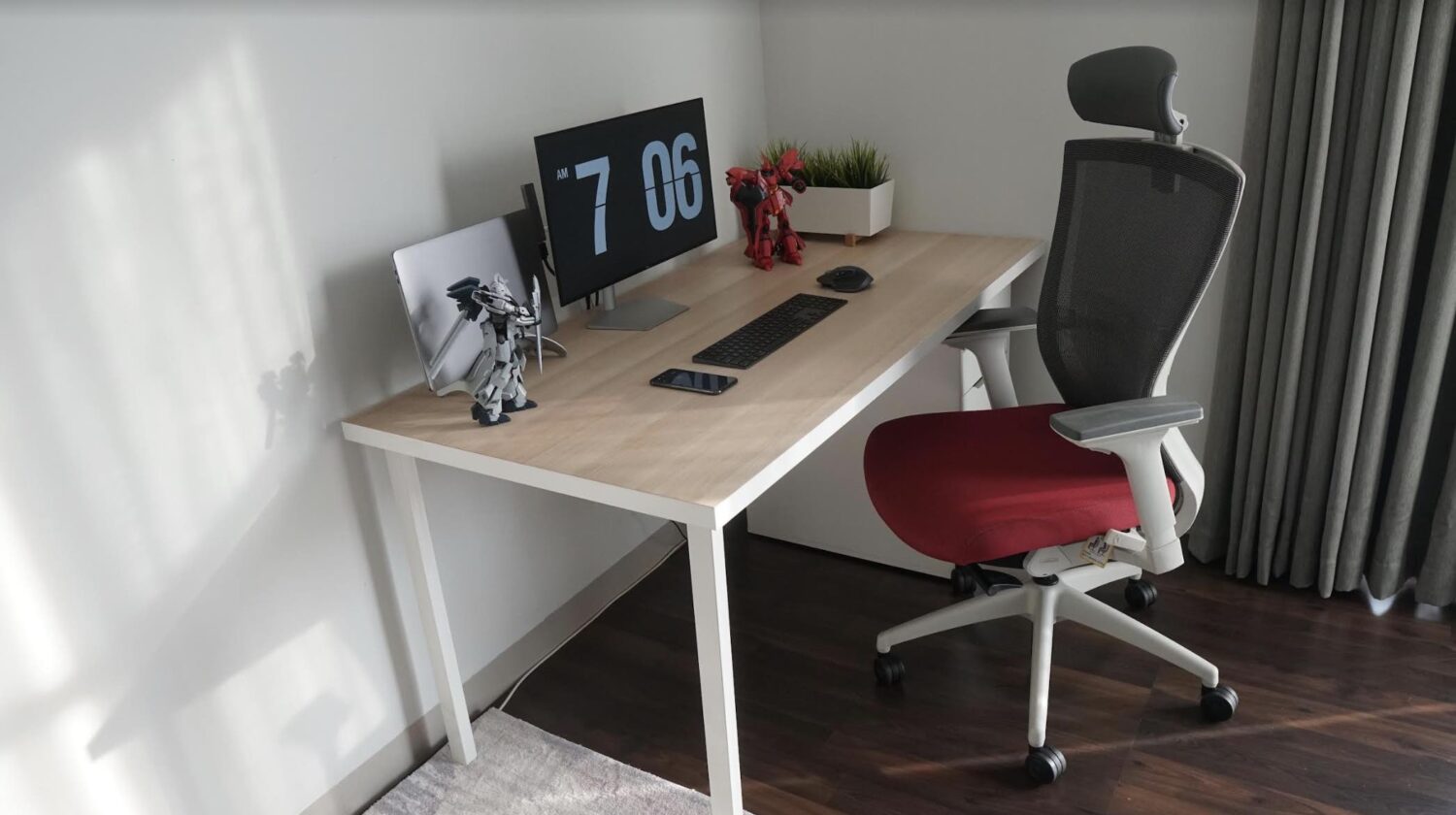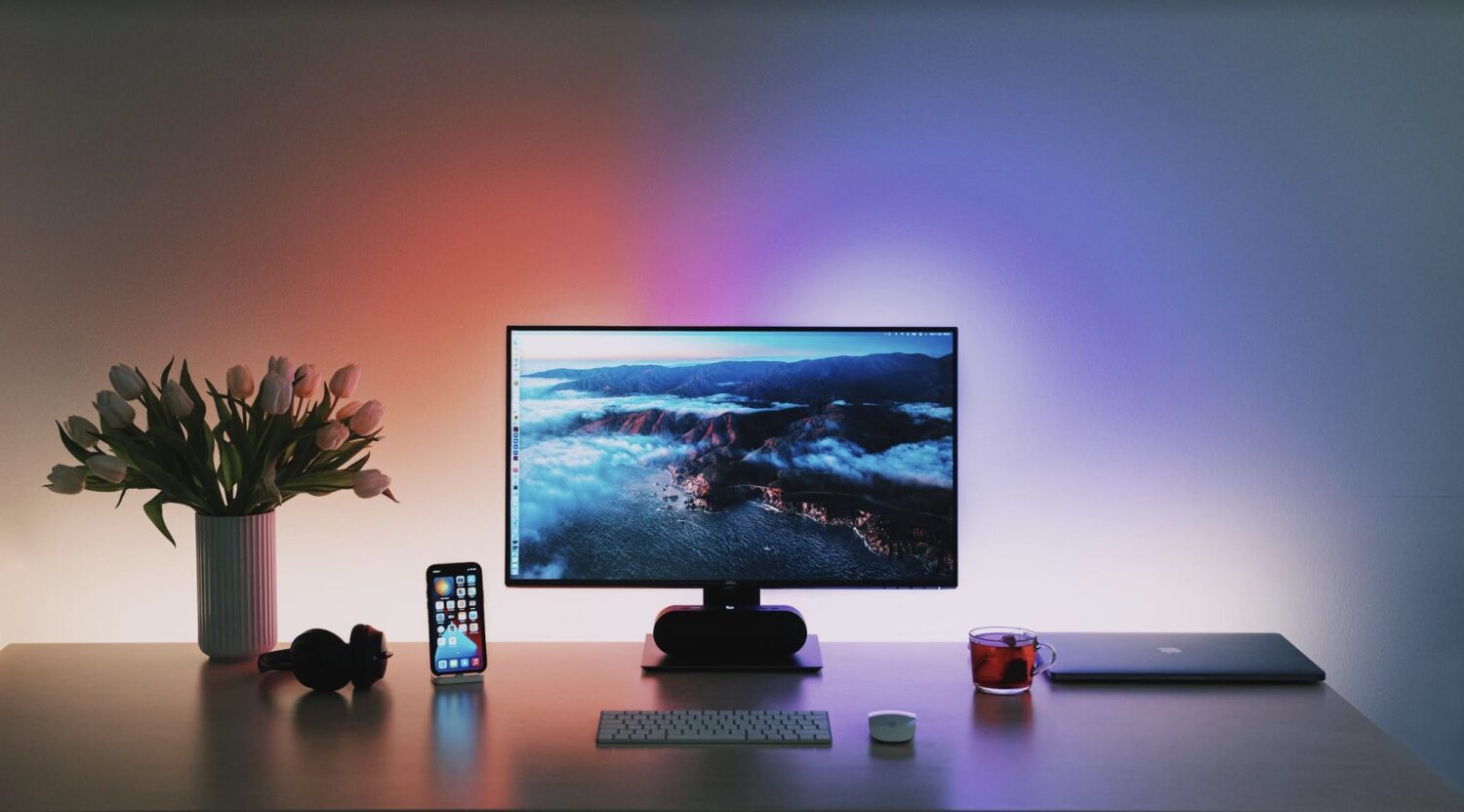Are you struggling to stay productive in your workspace? If you want to increase your productivity, the answer may be as simple as reorganizing your workspace. By making a few small changes to the layout and design of your workspace, you can create an environment that encourages creative work. Whether you are working from home or in an office, read on for 10 ways you can design your workspace to maximize your productivity.
1. Find a Dedicated Workspace
Having a space dedicated to work is essential for staying productive and focused. Specifically for work-from-home situations, choose an area that’s specifically designed for you to get your job done to help keep distractions at bay and stay on task.
“When you create a workspace for yourself, design it in a way that allows you to stay organized and be efficient,” explains George Fraguio, Vice President of Bridge Lending at Vaster Capital. “Whatever makes sense to you, go with that. Each person will have different needs when it comes to equipment, decor, and furniture.”
Having a designated workspace also helps with establishing boundaries between work and home life, as it creates a physical boundary between the two. As such, it’s important to invest some time and effort into creating an effective workspace for yourself.
2. Determine What Tools and Equipment You’ll Need
Think about all the tasks you need to do regularly and what you’ll need to make them easier. Consider items such as a computer, printer, phone, file cabinet, and other materials that are required for your job. Writing implements, paper, and notebooks are also essential tools for many tasks.
“Think about the type of space you’ll need for each item and how many items you’ll need,” recommends Alia Bedi, General Manager of L’Evate You. “Keep a tape measure handy as you map everything out to avoid cluttering your office.”
You need to create an environment that allows you to be productive and efficient, so carefully consider all the tools and equipment you’ll need and design the placement strategically.
3. Consider the Benefits of a Standing Desk
Standing desks have become increasingly popular in recent years, and for good reason. Aside from boosting productivity, studies have shown that standing at your desk can improve posture, reduce back pain, and burn calories. Standing desks let the user move more, which can help relieve stress and boredom while working.
“Standing desks can be beneficial to increasing focus and creativity,” explains Ubaldo Perez, CEO of Hush Anesthetics. “When people are standing, they tend to move around more, which can help to boost their mental alertness.”
A standing desk allows you to adjust your posture throughout the day, which can help you avoid feeling stiff and sore from sitting in the same position for extended periods. Some people even opt for an under-desk treadmill to further gain the benefits of improved productivity.
4. Remember the Importance of Comfortable Chairs
Finding the right chair can be the difference between a productive day and one spent feeling sore and achy. Investing in quality seating with the right support for your body is key.
“Ergonomic chairs are designed to offer support for the lower back and promote good posture,” explains Brianna Bitton, Co-Founder of O Positiv. “This helps to reduce strain on the neck and shoulders, as well as reduce fatigue over long periods of sitting. Armrests are beneficial for keeping the arms in a neutral position while typing or using a mouse, which can help reduce the risk of injury.”
The best way to find the perfect chair is to try them out in person and determine what’s most comfortable for you. Quality office furniture stores are an excellent resource for finding the perfect ergonomic chair for your workspace.
5. Understand Ergonomics
Poorly designed furniture can cause fatigue, pain, and other health issues that can reduce your productivity. Ergonomic furniture and equipment allow you to stay comfortable and healthy while working, which plays an important role in workplace productivity and efficiency.
“When designing your workspace, make sure that all furniture, such as desks, chairs, and keyboards, are adjustable to suit your needs,” Stephanie Venn-Watson, CEO of Fatty15 advises. “The chair should be adjustable in height and have adjustable lumbar support. Desks should be at a comfortable height, with plenty of room for legs and feet.”
When it comes to your tech, monitors should be positioned so they are easy to see without straining the neck or eyes, and keyboards should be tilted up slightly to prevent wrist strain.

6. Declutter Your Workspace
Decluttering your workspace can have a significant impact on your productivity. It can help reduce stress and make it easier to focus on tasks. Get rid of unnecessary items you don’t need or use, such as old files or notebooks, and create a system for organizing your papers and documents. This could include labeling folders or creating digital files.
“To avoid clutter, make use of vertical space,” recommends Ryan Rottman, Co-Founder and CEO of OSDB. “Add shelves and racks to keep items off the floor and out of sight. This will help keep your workspace looking neat and tidy.”
Sometimes no matter how decluttered your workspace is, it can still feel overwhelming. Take breaks from time to time to help you clear your head.
7. Utilize Natural Light
Having natural light in the workplace is one of the most important aspects of creating a productive environment. Studies have shown that natural light helps reduce stress, improve mood, and boost productivity. It allows you to stay more alert and focused throughout the day and helps reduce fatigue, which can lead to better decision-making.
“Try to choose an office where you have an adequate amount of natural light coming in,” suggests Christy Pyrz, Chief Marketing Officer of Paradigm Peptides. “This could be done through large windows, skylights, or even light tubes, depending on your available space.”
Use sheer curtains and keep the shades open to let plenty of natural light filter into your workspace. You may also want to consider using a combination of artificial and natural lighting to create an ideal balance.
8. Learn About the Benefits of Plants in the Workspace
Plants can greatly impact productivity, comfort, and overall well-being. Not only do plants help to reduce stress levels, but they can also increase focus, create a more calming atmosphere, and improve air quality. They’re also great for aesthetic purposes.
“Having a few strategically placed plants around your workspace can make it feel more like a home rather than just an office,” Emily Saunders, Chief Revenue Officer of eLuxury points out. “This is important for maintaining motivation and productivity over long periods.”
When choosing plants for your workspace, select options that require minimal maintenance. Succulents, cacti, and other low-maintenance varieties are perfect for this purpose. Consider adding one or two to your desk for a simple, natural addition to your workspace.
9. Make Use of White Noise
White noise is an ambient sound that can help mask other distracting noises in the environment. It can also create a sense of calm and focus, which is why many people find it helpful when trying to work or relax.
“White noise can block out unwanted distractions and help people concentrate on the task at hand,” Max Ade, CEO of Pickleheads explains. “It can also help create a sense of privacy in shared workspaces. If you have an open office plan, white noise can help create a barrier between conversations and activities taking place. This can be especially helpful if you need to make important phone calls or focus on a task without being disturbed by coworkers.”
If outside noises tend to be distracting during the workday, consider utilizing white noise. You can purchase specific white noise machines, utilize smart speakers, or find ambiance videos on YouTube.
10. Consider a Creative Station
It’s important to take a break from work and engage in something creative from time to time. Having a dedicated creative station in your workspace can be a great way to do that. A creative station doesn’t need to be elaborate or expensive. It could be as simple as a reading nook or an art station.
“A reading nook is a great way to relax and get away from the hustle and bustle of work,” recommends Matt Masiello, Chief Marketing Officer of BabyBuddha. “Consider setting up a comfortable chair and a lamp in the corner of your office where you can read without interruption. This will give you some much-needed quiet time.”
A creative station in your workspace can help you take a break and stimulate your imagination. Whatever activity helps you spark creativity, set up a space to make time for that whenever you need to increase productivity.
Final Thoughts
Creating a workspace that plays on your strengths is essential for performing at your most productive. Take the time to build a space that delivers exactly what you need.
Advertising disclosure: We may receive compensation for some of the links in our stories. Thank you for supporting LA Weekly and our advertisers.

